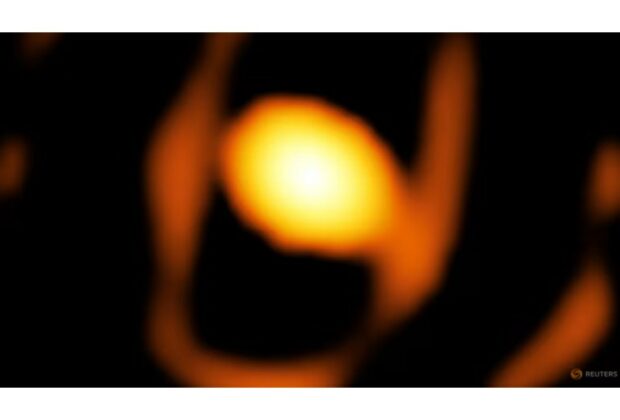The first time the events of this crucial period have ever been imaged, scientists have captured a close-up of a star that appears to be in its final stages, encircled by gas and dust as it approaches its doom in a massive explosion known as a supernova.
The detected star is located in the Large Magellanic Cloud, a nearby galaxy, rather than our Milky Way galaxy, which the astronomers say makes this even more amazing.
Although studies published last year identified a stellar baby in the Large Magellanic Cloud, this is the first zoomed-in image of a mature star in another galaxy. When an image is zomed-in, it shows the star and its immediate environs.
WOH G64, the fading star, is roughly 160,000 light-years away from Earth. Light travels 5.9 trillion miles (9.5 trillion km) in a year, which is known as a light-year.
interferometer. It depicts the star encircled by a luminous, egg-shaped cocoon of gas and dust known as a nebula, which appears to have been expelled by the star. Beyond the cocoon, a faint oval ring that might be composed of additional dust is also visible.
As the lead author of the study that was published on Thursday in the journal Astronomy & Astrophysics, astronomer Keiichi Ohnaka of Universidad Andrés Bello in Chile stated, “The star is in the last stage of its life before a stellar demise.”
“The reason we see these shapes is that the star is ejecting more material in some directions than in other directions. Otherwise, the structures would look spherical,” Ohnaka stated.
The gravitational pull of an as-yet-undiscovered companion star is another reason for these forms, according to Ohnaka.
WOH G64 was predicted to be between 25 and 40 times the mass of the sun before it began to blow out material, according to astronomer and study co-author Jacco van Loon of Keele University in England. This kind of enormous star is known as a red supergiant.
“Its estimated mass means it has lived for about 10 to 20 million years, and will soon die,” van Loon explained.
The first picture of a star “in this late stage possibly going through a never-before-witnessed metamorphosis prior to explosion,” van Loon continued, is this one.
“For the first time we have been able to see the structures that wrap a star in its death throes,” van Loon stated. “Even in our Milky Way galaxy we do not have such image.”
The lifespan of large stars is shorter than that of less massive ones. The sun, for example, is over 4.5 billion years old and will continue to be so for billions more.
The diameter of WOH G64 is enormous as it expands in anticipation of its anticipated explosion in the not-too-distant future. It would reach the orbit of Saturn, the sixth planet from the sun, if it were positioned in the center of our solar system.
Ohnaka stated, “We found out that WOH G64 has changed its appearance noticeably in the last 10 years,” adding that it was getting dimmer, possibly as a result of the gas and dust it had emitted obscuring its starlight.
“This gives us a rare opportunity to witness a star’s life in real time, in particular the last stages of a heavyweight star before its death in a supernova explosion,” Ohnaka said.
Like the adjacent galaxy known as the Small Magellanic Cloud, the Large Magellanic Cloud is a satellite galaxy of the Milky Way. Both provide distinct cosmic conditions and are smaller than our galaxy.
For example, the Large Magellanic Cloud has fewer metallic elements—that is, elements other than hydrogen and helium—and less dust than the Milky Way. According to van Loon, that trait “may make a difference in the way stars live and die.”
“Such conditions were more common in the early universe and may resemble the Milky Way when it was young,” van Loon said.








